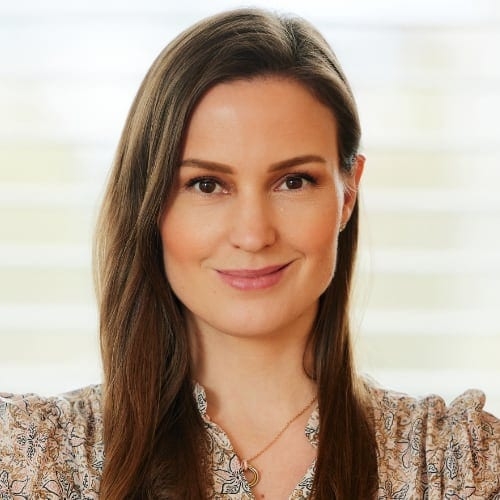The turn of another year provides an opportunity for the Open Banking, Open Finance and payments industry to take stock of developments over the past 12 months and consider where priorities lie in the coming year.
Will 2024 be the year that Open Banking payment adoption takes off? Can non-sweeping variable recurring payments (VRPs) go mainstream in the UK?
How will regulation, such as PSD3, continue to stimulate Open Banking innovation and competition, and ensure interoperability?
Finally, can the industry effectively tackle financial and payments fraud? And will emerging technologies, such as AI, play a part?
The road to mass adoption
2024 needs to be a year of progression and conviction in Open Banking, according to Mark Brant, chief payments officer at NatWest.
“Prioritising shaping the necessary commercials, risk, liability frameworks and pricing. It will take time to develop and build a critical mass of industry participants to drive adoption, especially of elements like VRP, which needs to move beyond sweeping mandates,” he explains.
“The market requires further and deeper cross-industry collaboration and negotiations to build critical mass to drive adoption.”
Open Banking Limited reported that there were more than eight million users of Open Banking in November in the UK, while the number of successful single domestic payment and VRP initiations made by third party providers using account providers’ Open Banking APIs hit 1.2 billion.

Lena Hackelöer, founder and CEO of Brite Payments
Lena Hackelöer, founder and chief executive officer of Brite Payments, says: “Here at Brite, we’re following closely the adoption of Open Banking payments in different countries and verticals across Europe.
“The UK has reached significant milestones in terms of adoption and usage in 2023 and is, in many regards, the region’s most mature market. However, there are other European countries – such as Germany – where card payments are far less entrenched and where Open Banking payments are starting to show significant uptake.”
She adds: “The next generation of Open Banking payment providers take account-to-account payments to the next level, offering merchants and customers a wide range of benefits. This could drive considerable interest and adoption throughout 2024.”
While the UK may continue to lead, Hackelöer insists that she will be paying close attention to those other major EU economies that are trying to close the gap.
Hackelöer, who won the Open Banking Expo Women in Open Banking International Woman of the Year Award in October, forecasts “stronger uptake in certain sectors or business models that have a particularly good fit for Open Banking payments over the next year”, including online marketplaces and consumer financial services businesses.
“Another opportunity is those ecommerce businesses with high average order value, which traditionally have battled with higher card fraud rates,” she notes.
VRP in 2024
Charles Damen, chief product officer at Token.io, suggests that the UK can become a world leader in Open Banking and real-time retail payments, but that “we must work together to make this a reality”.
In the UK in 2024, the work undertaken by both Joint Regulatory Oversight Committee (JROC) working groups on VRPs and the future entity, respectively, will begin to take shape.
The VRP Working Group (VRPWG) has already published its blueprint and JROC has responded, with a commitment to targeting a Phase 1 rollout of non-sweeping VRPs by the third quarter of 2024. JROC stated in its response that introducing VRP services will help scale Open Banking “at pace”.

Token CPO Charles Damen
Damen says: “While UK banks have been mandated to implement VRPs for sweeping use cases, many have not yet developed its potential as a foundation to monetise their investment in Open Banking through premium API functionality, such as commercial VRP.
“This is despite the need for a viable alternative to traditional payment methods in the UK — as well as clear interest from merchants.”
He cites an industry-wide survey conducted by Token.io and Open Banking Expo which found that around 80% of merchants surveyed thought VRPs have the potential to be cheaper than card payments.
The VRPWG’s blueprint revealed that the members “declared a strong appetite to develop a robust commercial model that could deliver an ambitious vision for cVRPs”.
The Payment Systems Regulator (PSR) is consulting separately to seek stakeholder input on the “possible need” for a multilateral agreement.
“In the UK, some banks are further ahead in developing bilateral agreements than others, so a commercial model implemented in the same way across all banks would create a level playing field for merchants and consumers,” says Damen.
“In my view, the establishment of a multilateral agreement that would enable scale across the wider ecosystem is therefore the best long-term solution. Pilots of commercial VRPs in 2024 will inform the key elements of a multilateral agreement.”
PSD3 ‘looms large’
In June this year, the European Commission set out its revisions to the Payment Services Directive.
PSD3 includes an intention to remove “remaining obstacles” to providing Open Banking services and “improving customers’ control over their payment data, enabling new innovative services to enter the market”.
“PSD2 set the scene for the first wave of Open Banking innovators in Europe and, now with PSD3 taking shape, we’re going to see new players emerging that further challenge the status quo,” says Hackelöer.
“Open Banking payments are already proving to be one of the bright spots for Open Banking more generally, and the proposed legislative changes will hopefully level the playing field to ensure competition and innovation.
“Although it won’t come into effect in 2024, PSD3 and the accompanying Payment Services Regulations (PSR) will loom large over the sector in the year ahead, and will undoubtedly define the next phase in the evolution of Open Banking in Europe,” she concludes.
Given the timeline for PSD3, there is a clear runway for firms to plan and prepare.
For Bruno Leite, director of implementations and solutions consulting at Signifyd, PSD3 is an evolution of PSD2, rather than a revolution.
“In 2024, businesses should actively embrace PSD3’s potential rather than leaving implementation and integration to the eleventh hour, like we saw with PSD2,” he says.
Leite adds: “It’s going to be a bumpy road, but we can take the lessons learned from PSD2’s implementation, rollout and use to date, to take this important next step in the evolution of European payments regulation.
“2024 marks an opportunity for businesses to seize the moment of implementation and optimisation with a razor-sharp focus on delivering frictionless customer experiences for maximum impact and conversions.”
Fighting fraud
Fraud has been top of mind for the industry this year – and tackling it through detection and prevention will remain a priority in 2024.
Official figures published by UK Finance in May showed that more than £1.2 billion was stolen via authorised and unauthorised fraudulent activity in the UK in 2022, down 8% on 2021.
It revealed that 78% of authorised push payment (APP) fraud cases started online, while telecommunications accounted for 18%.
However, APP fraud losses declined 17% year-on-year in 2022, to reach £485.2 million.
Meanwhile, banks and other institutions will be readying for the PSR’s APP fraud reimbursement requirement, which comes into effect on 7 October 2024 in the UK.
The PSR has set the maximum level of reimbursement per claim at £415,000 and has split the cost of reimbursement 50:50 between sending and receiving firms, marking the first time incentives have been put in at the receiving end.
Fraud and scams are the single largest category of crime in the UK, according to NatWest’s Brant.
“Incoming PSR rules on reimbursement will help increase refunds to customers, but broader-based actions are needed to tackle the underlying crime and ensure consistency across different payment methods, and actors within the payments journey,” he says.
Brant added that scams need to be tackled in a comprehensive way, and at source, meaning that Big Tech is likely to be an area of focus, given that 87% of all APP scams begin on “tech platforms”.
Barry Rodrigues, executive vice president, payments at Finastra warns that payments operating in real-time bring increased risks of instant financial crime.
He believes that the answer lies in machine learning and artificial intelligence (AI).
“Banks will need to invest in technologies, such as machine learning and artificial intelligence, for faster and more accurate sanctions screening, transaction monitoring and fraud detection,” explains Rodrigues.
“Additionally, more institutions will explore the use of generative AI. For example, to produce synthetic data that looks like fraud transactions, which will enable banks to build more robust models to identify new sets of fraud they’ve never seen before.”
Rodrigues adds that for banks to “truly” benefit from the move towards frictionless, instant and data-rich payments, without compromising fraud prevention, investment in payments modernisation “will be key”.










